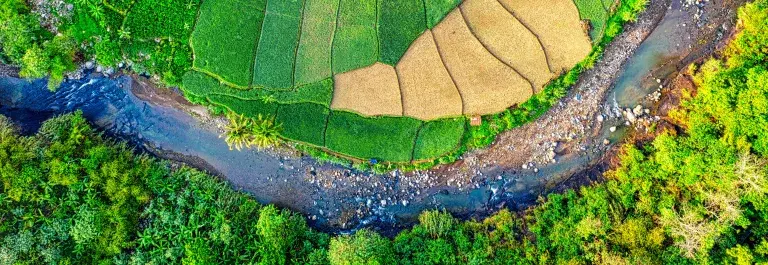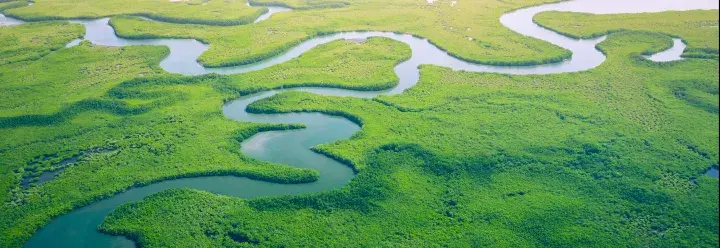With support from the ISEAL Innovations Fund, ISEAL members have advanced their understanding of how sustainability systems can operate at a landscape level, helping to accelerate change and deliver impact at scale.
Many companies are investing in the creation of sustainable sourcing regions to de-risk their value chains, resulting in a growing number of landscape or jurisdictional initiatives. There are many roles sustainability systems can play, using their expertise in measurement, verification, multi-stakeholder convening and capacity building. With this in mind, the Innovations Fund challenged ISEAL members to come together to explore different ways that they can support landscape-level interventions. Here we share some of the takeaways for sustainability systems.
Prioritise where and how to operate at a landscape level
No two landscapes are the same and it might not be feasible to apply the same approach across all countries in which a sustainability system organisation operates. Better Cotton’s project adapting to a landscape approach, demonstrated the value of both bringing their expertise to a wider group through an existing landscape initiative, and convening joint action in a landscape where an initiative did not previously operate. It is necessary to prioritise where and how to become involved at landscape level to create the biggest impact with the expertise and resources available.
Unlock scale through collaboration and data sharing
Teaming up with initiatives that share the same goals can expand the reach and effectiveness of an intervention. In Indonesia, three ISEAL members sought to drive good water stewardship at a district level by strengthening related requirements for certification in rubber and palm oil and working with local government. Collaboration around data can also be a game changer as proved by the integration of seafood certification and jurisdictional assurance models project, where project partners shared data across different operating levels (national, regional and production unit) to provide a comprehensive and cost-effective view of aquaculture in the region.
Build local ownership and capacity for long-lasting change
Local communities must be involved at the start of a landscape initiative to ensure local needs, priorities and capacity for data collection are reflected. The development of a blueprint for a sustainable landscape in Colombia and a hybrid community monitoring system in Ghana tested a ‘bottom-up approach’ to landscape monitoring. They empowered local community actors to make informed decisions by sharing data back in a user-friendly way. Making data accessible helped engage other landscape stakeholders and can encourage greater information sharing, collective action and the ability to embed change beyond a project’s lifespan.
Use geospatial data to assess and communicate risks in a landscape
Several projects were able to use geospatial analysis as an effective and cost-efficient way to measure key variables in a landscape such as land use and water availability. This helped build a clearer picture of the landscape, which was then further refined with on-the-ground validation. Projects also found it useful to display data visually when talking with stakeholders about change and risk and to help inform decision-making. The blueprint for a sustainable landscape was one of these projects and developed a protocol for other organisations looking to make the best use of geospatial data.
Landscape initiatives are not just about environmental sustainability
Landscape approaches typically focus on environmental issues, such as deforestation. However, improving social and economic conditions in a region greatly contribute to systemic change. The Landscape Monitoring Framework of the socio-economic dimension (LMS) provides guidance for the measurement of social and economic indicators at different scales, linking to other efforts such as the calculation of a living income in an area.
ISEAL Innovations Fund grant recipients have shared the learning from their projects within and beyond the ISEAL community. Innovations Fund project results have also informed ISEAL’s work to support credible claims at a landscape level.
We look forward to seeing further collaboration in the second phase of the ISEAL Innovations Fund, with continued support from the Swiss State Secretariat for Economic Affairs SECO.



